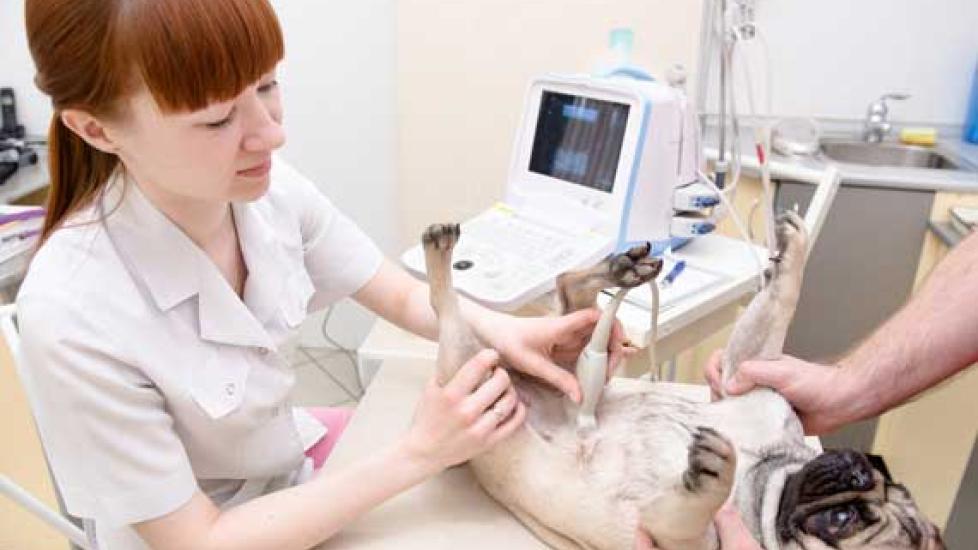The Art and Science of Diagnosing GI Disease
Diagnosing GI (gastrointestinal) disease in dogs and cats is not always a quick process because most conditions (and there are a lot of them) cause similar symptoms — namely some combination of vomiting, diarrhea, poor appetite, and/or weight loss. Every veterinarian has their own style, but I suspect my methodology is fairly standard. Here’s how I go about diagnosing a patient who has symptoms consistent with GI disease.
A complete history and physical exam are always the first steps in the diagnosis of any sick animal. A veterinarian needs to gain an understanding of the patient’s health history (today’s problem may be related) and determine exactly what the current symptoms are, how long they have been present, and how severe they are. At times, the physical exam will reveal something that narrows the list of potential problems (e.g., a mass is felt in the abdomen), but even when this is not the case the veterinarian will be able to get a feeling for the patient’s overall condition (dehydrated or not, in pain, etc.).
What should be done next is determined by the results of the history and physical examination. For example, if my patient is an adult dog who has had diarrhea for a few days but appears fine otherwise, I might simply run a fecal exam and prescribe treatment with the understanding that if the dog’s condition worsened at any time or failed to resolve in a few days, I would need to see him again for additional testing. On the other hand, if I am dealing with an extremely sick kitten who is suffering from severe vomiting, diarrhea, and dehydration, my recommended work-up would be much more involved.
In general, I pick and choose between the following diagnostic tests. If the owner is cost-conscious, I can take a stepwise approach, or if he or she wants to reach a definitive diagnosis as quickly as possible, we can run a battery of tests simultaneously:
- fecal examination
- blood chemistry panel and complete cell count
- urinalysis
- abdominal X-rays
- abdominal ultrasound
- tests for specific conditions as appropriate (canine parvovirus, feline leukemia virus, pancreatitis, etc.)
Ideally, I will now know the cause of a pet’s symptoms, but the sad truth is that some GI diseases can only be diagnosed on the basis of gastrointestinal biopsies. These can be taken either through the use of an endoscope or during exploratory abdominal surgery. The techniques have a requirement for general anesthesia in common, but they have other pros and cons that need to be carefully weighed before deciding how to proceed.
| Pros | Cons |
|---|---|
| No incision needed | Only part of the GI tract is accessible |
| Quick recovery | Only small "pinch" biopsies can be taken |
| Little pain | Only small foreign bodies or masses can be removed |
| Lower risk for complications | Potential exists that surgery will still be needed |
| Pros | Cons |
|---|
Exploratory Surgery
I can’t overemphasize how important good communication is throughout this entire process. It is the only way to ensure that veterinarians and owners are on the same page with regards to the cost of treatment and what is ultimately in the pet’s best interests.

Dr. Jennifer Coates
Image: Ermolaev Alexander / Shutterstock
